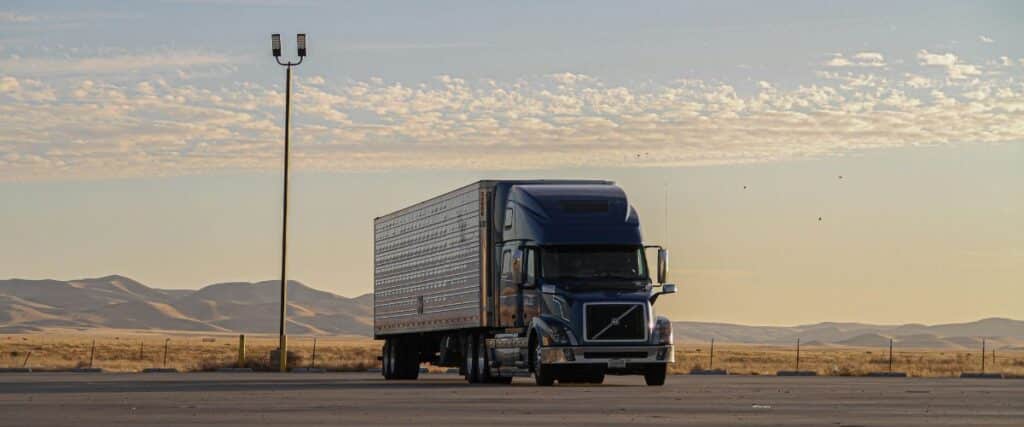
Table of Contents
Long-distance deliveries often take longer than expected due to having only one driver in charge. In this blog, we introduce double crew, a logistics strategy that helps reduce delivery times by alternating between two drivers.
But what exactly is a double crew?
What is double crew?
Double crew is a logistics strategy in which two drivers take turns driving the same vehicle along a long route. By alternating, delivery times are optimized, as the truck can remain in motion for more hours without the need for long stops for driver rest.
In the following section, we will explain the types of driving that can be employed within the double crew system, each adapted to the needs and characteristics of the trip.
Types of Driving in Double Crew
Driving in double crew can be employed in different ways, depending on factors such as travel time, permitted driving hours, and logistical needs.
Below, we explore some of the most common options that help maximize efficiency in freight transportation.
- Shift or Alternating Driving
In this model, the drivers alternate at pre-established times, usually every 4 or 6 hours. While one drives, the other rests in the truck cabin or at a designated stop. Unlike team driving, here the changes do not depend on the situation of the route, but rather on a strict schedule that is followed.
- Team Driving
Unlike shift driving, in this model, the drivers do not follow a fixed schedule but divide the work based on the demands of the route. Both collaborate to optimize driving, exchanging shifts flexibly. One may drive on highway stretches, while the other handles urban areas or complex maneuvers. Additionally, they can share tasks such as document management, route planning, or communication with the company.
- Continuous Driving
In this system, the shifts are organized to cover both day and night cycles. Unlike the other models, the drivers do not switch every few hours; instead, one drives during the day and the other at night, allowing the truck to remain in motion almost 24 hours a day.
We know the types of driving, but when is double crew really needed?
When is Double Crew Used?
Double crew is mainly used in situations where long trips, urgent deliveries, or the need to keep the truck moving continuously are required. Some of the most common situations in which double crew is employed include
- Long-Distance Trips
When transportation needs to cover long distances, double crew allows the vehicle to remain in motion for a longer period. This is especially useful on routes that exceed 8 hours of continuous driving, as the drivers can alternate and rest without delaying the delivery.
- Urgent or Just-in-Time Deliveries
In the case of urgent or just-in-time deliveries, where transit time must be as short as possible, double crew is key to shortening delivery times. The two drivers work in shifts to ensure that the vehicle stays in motion without long stops, helping to reduce transportation time.
- Complex or Hard-to-Access Routes
On complicated routes or those that require high concentration, such as mountain roads or hard-to-access paths, double crew can provide an efficient solution. The drivers can switch in safe areas to ensure that each one is in their best physical and mental condition throughout the journey.
Although double crew helps optimize delivery times, it does not mean the vehicle is in constant motion without considering driving regulations. To ensure effectiveness and safety, there are specific regulations that govern driving hours and driver rest periods. Below, we explain the main regulations that must be followed for double crew to be successful and meet legal requirements.

Important Regulations for Double Crew
Although double crew improves transportation efficiency, its implementation is strictly regulated by laws and regulations that ensure the safety and well-being of drivers. In Europe, one of the key regulations is Regulation (EC) 561/2006, which sets the rules for driving and rest times for commercial vehicle drivers.
- Daily Driving Hours
A driver can drive a maximum of 9 hours per day, with an exception of 10 hours allowed only twice a week. This can be extended if alternating with another driver in the double crew system.
- Weekly Driving Hours
Driving should not exceed 56 hours per week, and the total monthly driving duration should not exceed 90 hours.
- Daily Rest
Each driver must have a minimum rest of 11 hours per day, which can be reduced to 9 hours a maximum of three times a week. The rest periods can be split into segments as long as the total rest time is at least 11 hours within a 24-hour cycle.
- Rest Time in the Vehicle
In double crew, both drivers must rest for a minimum of 9 hours during the trip to maintain their focus and prevent accidents caused by fatigue.
- Breaks
The driver must take a break of at least 45 minutes after 4.5 hours of driving.
- Tachograph
The tachograph is a mandatory device that automatically records the driving and rest hours of drivers. It is essential to ensure that driving times and rest periods are followed according to the regulations.
Double crew offers significant benefits for both transportation companies and drivers. However, it also presents certain challenges that must be considered. Below, we break down the main advantages and disadvantages of this system.
Advantages and Disadvantages
Disadvantages
- Commitment to Coordination
The success of double crew depends on good communication and coordination between the two drivers. If they are not well organized, issues such as confusion in shifts, delays at stops, or even safety risks can arise.
- Complex Logistics
Organizing driver shifts and managing rest times efficiently can be logistically more complex for companies. This can pose an additional challenge in trip planning.
- Specific Rest Requirements
Although double crew allows for extended driving time, drivers must still comply with mandatory rest periods, which may result in additional stops that, while necessary, can extend the total delivery time.
- Drivers Are Paid Separately
Even though the drivers share the same truck and workload, each one is paid separately based on their shift and hours worked. This logistical and administrative aspect can add an extra layer of complexity for transport companies.
Advantages
- Reduced Delivery Times
The main advantage of double crew is the ability to keep the vehicle moving for longer periods, significantly reducing delivery times. This is especially useful for long routes or when strict deadlines must be met.
- Increased Transport Efficiency
With two drivers, the vehicle can operate for more hours per day without stopping, improving efficiency and maximizing the use of the truck fleet.
- Improved Safety
Double crew helps prevent driver fatigue. By alternating shifts, both drivers can rest properly, reducing the risk of fatigue-related accidents and increasing road safety.
- Compliance with Rest Regulations
The shift organization in double crew facilitates compliance with European regulations on rest and driving times, ensuring that drivers remain in their best state of alertness throughout the journey.
Conclusion
It is essential for companies to have a solid and optimized system to maximize the benefits of double crew and prevent small logistical errors from leading to unexpected consequences. In this regard, having the right experience and support can make a significant difference in ensuring the process runs smoothly.
Without an optimized system, even a minor lack of organization could disrupt the truck’s continuous flow, increasing delivery times and affecting your company’s reputation. These types of issues cannot be solved with simple internal adjustments, as they require precise planning managed by professionals experienced in double crew logistics.
At Portex Logistics, our team of professionals is ready to assist you at every step of the process, ensuring that your shipment is efficient and fast using double crew. If you have any questions or need more information, don’t hesitate to contact us. We are here to help you optimize your logistics and ensure the success of your deliveries.
Before optimizing your route with double crew, make sure you know the legal framework. We’ve summarized the 10 essential regulations you need to follow.
